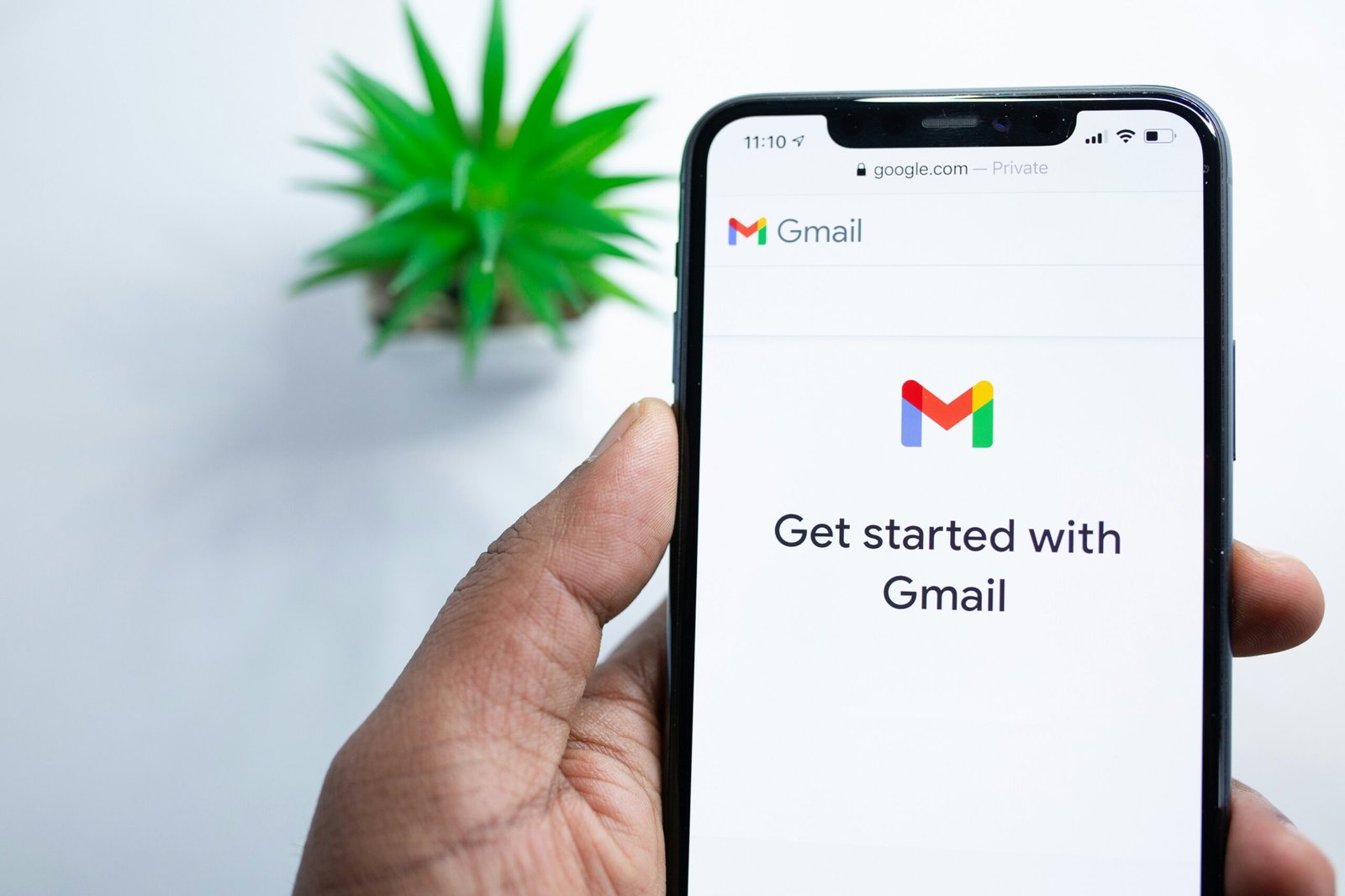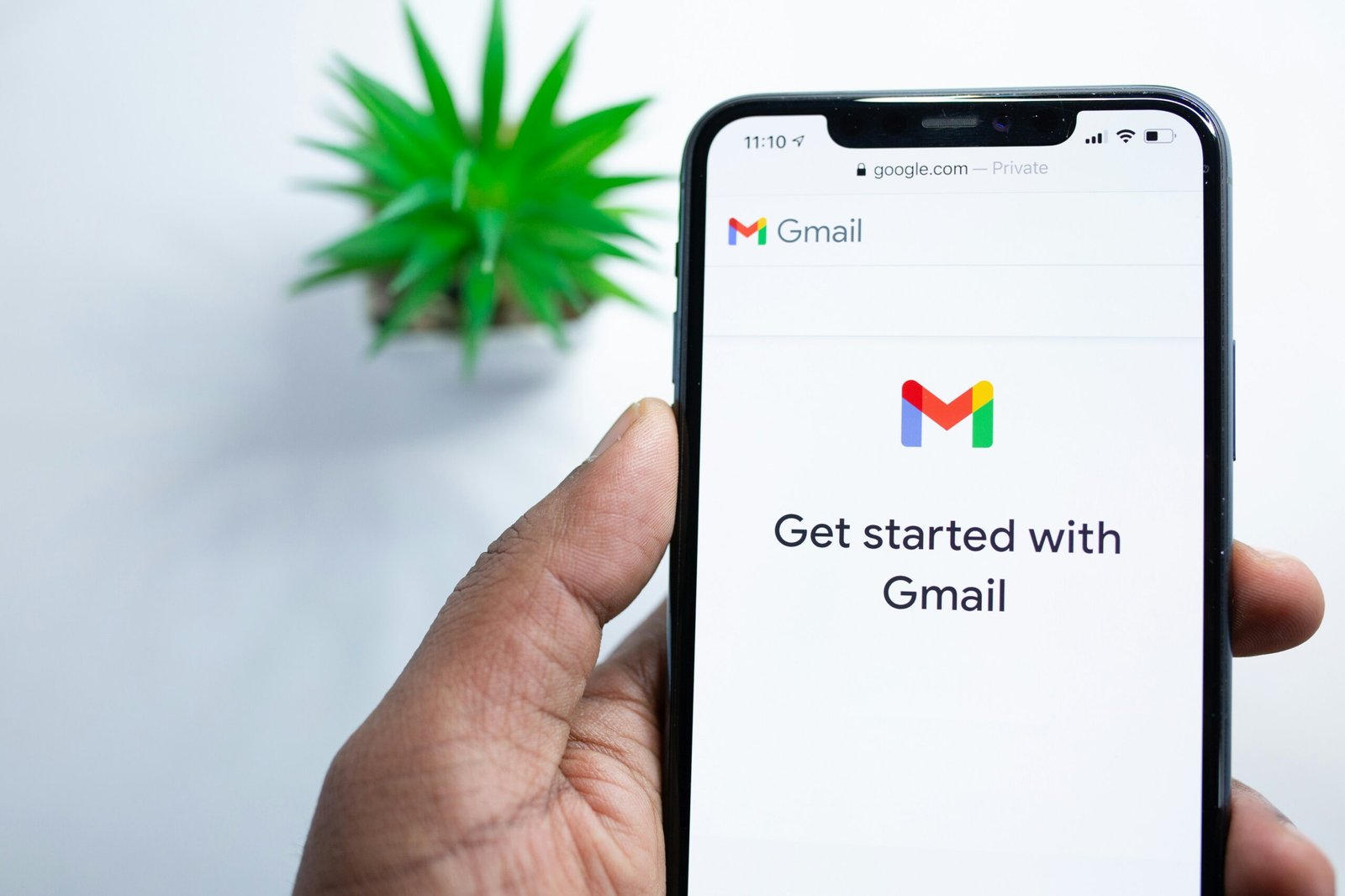Introduction to B2B Email Marketing
B2B email marketing has emerged as an essential tool for businesses aiming to foster meaningful interactions within their industries. This form of communication is characterized by its focus on building long-term relationships, understanding client needs, and driving conversions. In today’s rapidly evolving business landscape, where companies are driven by results and require immediate connectivity, utilizing email as a strategic marketing channel has proven to be highly effective. Through tailored messaging and strategic targeting, businesses can engage prospects and customers alike, ensuring their brand remains relevant and top of mind.
One of the primary advantages of B2B email marketing is its ability to facilitate personalized communication. By segmenting email lists and crafting content that speaks directly to the recipient’s interests and challenges, businesses can enhance engagement and encourage recipients to take action. Regularly sending value-driven content not only nurtures leads but also positions the brand as a knowledgeable authority in the domain. Consequently, companies can cultivate trust and reinforce their brand identity through consistent and clear communication.
Furthermore, B2B email marketing serves as a vital conduit for driving sales and generating leads. By presenting compelling offers or insights, businesses can encourage potential clients to explore their products or services further. The integration of analytics can also provide insight into customer behaviors, allowing firms to optimize their email campaigns for maximum effectiveness. This detailed analysis informs future marketing strategies, helping businesses adapt to their audience’s preferences and remain competitive in the market.
In summary, effective B2B email marketing is about more than just sending messages; it is about creating a cohesive strategy that integrates relationship-building, brand awareness, and sales generation. The diversity of email types utilized can engage various stakeholders, each contributing to an organization’s broad marketing objectives. With the right approach, email can be a powerful component of any B2B marketing effort.
The Cold Outreach Email
In the realm of B2B marketing, cold outreach emails serve as a fundamental tool for initiating contact with potential clients who have had no prior interaction with the sender. These emails are designed to introduce a company’s products or services to targeted recipients and foster new business relationships. The primary purpose of a cold outreach email is to generate leads; they aim to pique the interest of prospects, encouraging them to engage further with the offerings presented.
Writing an effective cold outreach email requires adherence to several best practices that enhance the likelihood of a positive response. Personalization is paramount; addressing the recipient by name and referencing their specific industry or needs can significantly improve engagement rates. Customizing the message shows that the sender has done their homework and is genuinely interested in the recipient’s business, thus fostering trust and rapport.
Conciseness is also crucial in cold outreach emails. Recipients often receive numerous emails daily, making brevity a key component in ensuring the message is read and understood. A well-structured email that gets straight to the point while emphasizing the value proposition is more likely to capture attention. The inclusion of a clear call to action (CTA) is essential; whether it’s scheduling a call, downloading a resource, or replying for more information, a compelling CTA guides the recipient toward the next step.
Examples of successful cold outreach formats might include short introductory paragraphs outlining how the sender can assist the recipient, bolstered by relevant statistics or case studies that illustrate past successes. To further improve response rates, A/B testing different subject lines and templates can provide valuable insights into what resonates most with the target audience. Implementing these strategies can significantly enhance the effectiveness of cold outreach emails in generating valuable leads within the B2B landscape.
The Follow-Up Email
The follow-up email is a crucial component of B2B communication, particularly in nurturing leads and maintaining engagement with potential customers. These emails serve as reminders of previous interactions and are instrumental in fostering ongoing relationships with prospects. Timeliness is essential when sending follow-up emails; the optimal window typically ranges from 24 to 72 hours after the initial point of contact. This promptness demonstrates attentiveness and allows for continued dialogue without significant delays that might lead to a loss of interest.
To enhance the efficacy of follow-up emails, it is vital to incorporate strategies that highlight the value proposition offered to the recipient. Reminding them of prior discussions or presentations can be especially useful in rekindling their interest. It creates a personal touch, making the email feel tailored rather than generic. Additionally, reiterating key benefits that your product or service can provide helps reinforce the message that resonates with their specific needs.
Incorporating new information or insights can also significantly boost the effectiveness of follow-up emails. This may include recent case studies, testimonials, or updates about your company that pertain to the recipient’s interests. Such information positions the sender as both informed and resourceful, strengthening the connection with the potential customer.
Examples of effective follow-up emails range from simple reminders to personalized correspondence tailored to specific topics discussed previously. A well-crafted subject line, clear structure, and a call to action can significantly increase the chances of eliciting a response. Crafting these emails with strategic intent ensures ongoing engagement, ultimately leading to higher conversion rates and established relationships that benefit both parties.
The Newsletter Email
In the realm of B2B marketing, newsletter emails play a crucial role by serving as a primary channel for communicating with both current and potential clients. These emails are essential for sharing valuable content, industry news, and updates about the company, creating a cohesive connection between the brand and its audience. A well-crafted newsletter helps to keep the brand top-of-mind for recipients, establishing a sense of trust and authority in the market. By consistently delivering high-quality content, companies can position themselves as thought leaders within their respective industries.
One of the fundamental aspects of an effective newsletter is the selection of content. Marketers should focus on curating articles, case studies, and insights that resonate with their audience’s interests and pain points. Incorporating industry trends and best practices can further engage readers, providing them with actionable information. It’s important that the content is not overly promotional; instead, it should offer genuine value that encourages recipients to open and read each issue. This fosters a greater connection with the audience, promoting long-term relationships.
Design elements also play a significant role in the effectiveness of newsletters. A clean, organized layout that is visually appealing can significantly enhance user experience. Utilizing a mobile-responsive design is crucial, as many recipients may read their emails on smartphones or tablets. Furthermore, selecting appropriate images and maintaining a consistent color scheme that aligns with brand identity can strengthen brand recognition.
When it comes to frequency, finding the right balance is key. Sending newsletters too frequently may overwhelm recipients, while infrequent communication can lead to disengagement. A monthly or bi-weekly schedule often works well, allowing ample time for content curation and maintaining interest. Ultimately, the newsletter email remains a vital component of B2B marketing, providing a valuable platform for brands to share insights and updates while nurturing relationships with their audience.
The Promotional Email
Promotional emails play a pivotal role in B2B marketing strategies by driving sales through specific offers, product launches, or special events. To ensure the effectiveness of such emails, several key components must be carefully considered. First and foremost, crafting a compelling subject line is crucial. The subject line should be enticing enough to capture the recipient’s attention and encourage them to open the email. This may involve prompting curiosity or highlighting significant value, such as discounts or exclusive offers.
Following the subject line, the body of the email should clearly showcase the benefits of the promotion. A well-structured promotional email outlines what is being offered and why it matters to the recipient. It is essential to focus on the unique selling points of the product or service being promoted, as this can significantly impact the reader’s decision-making process. Using bullet points or short paragraphs can enhance readability and ensure that key information stands out.
Furthermore, including a strong call to action (CTA) is indispensable. The CTA should be clear, concise, and visually distinct, guiding recipients towards the desired action, whether it’s making a purchase, signing up for a webinar, or downloading a product brochure. Effective CTAs improve conversion rates and streamline the customer journey.
Best practices for segmentation and timing should also be a consideration when sending promotional emails. Segmenting the audience based on their past behaviors, demographics, or engagement levels allows for more personalized and relevant promotions. Additionally, timing plays a critical role; promotions sent at strategic times, such as during peak workplace hours or associated with noteworthy events, can enhance visibility and engagement rates.
The Survey or Feedback Email
In the landscape of B2B communication, the survey or feedback email is an essential tool for businesses seeking to cultivate engagement and gather valuable insights from clients and leads. These emails serve not only as a means of soliciting opinions but also as a demonstration that a business genuinely values customer feedback, thereby strengthening its relationship with clients. By incorporating surveys, organizations can better understand their clients’ needs and improve their offerings, leading to enhanced customer satisfaction and loyalty.
When crafting a survey or feedback email, clarity and brevity are paramount. A well-structured email begins with a succinct introduction that outlines the purpose of the survey. It should clearly indicate the estimated time required to complete it, encouraging recipients to participate without feeling overwhelmed. Using clear language that highlights the value of their input can significantly boost participation rates. For instance, stating how the feedback will directly influence product development or customer service enhancements can motivate recipients to contribute.
To further increase response rates, businesses should consider leveraging incentives, such as discounts or entry into a prize draw, as a thank you for completing the survey. Additionally, using user-friendly survey tools and formats can simplify the process, making it less burdensome for respondents. It’s also vital to ensure the survey is mobile-friendly, as many users often engage with emails via their smartphones.
Once the data is collected, it is crucial for businesses to analyze and act upon the insights gained. Demonstrating to clients that their feedback has been heard and implemented can reinforce their trust and commitment to the brand. In summary, the survey or feedback email is a powerful mechanism for fostering engagement and acquiring actionable insights that can ultimately drive business improvements and enhance customer relationships.
Best Practices for B2B Email Writing
Writing effective B2B emails requires a strong understanding of the recipient’s needs and preferences, as well as adhering to certain best practices that enhance communication. One of the foremost aspects of crafting these emails is the subject line. A compelling subject line serves as the gateway to your message, encouraging the recipient to open and read your email. It should be concise, relevant, and ideally create a sense of urgency or interest.
Maintaining a professional tone throughout the email is equally crucial. B2B communications typically foster relationships based on trust and respect. Therefore, adopting a formal yet approachable voice is recommended. Avoid overly casual language, but strive for a conversational style that allows readers to feel engaged and valued. Remember, the goal is to build rapport while conveying important information.
Conciseness is key in B2B emailing. Aim to keep your messages direct and to the point, ensuring that each sentence adds value. This means avoiding unnecessary jargon or long-winded explanations. Instead, focus on clarity and precision. Bullet points and visuals can further improve the readability of your B2B emails. These elements break up the text, making it easier for recipients to scan the content quickly, which is often essential in fast-paced business environments.
In addition to readability, a strong call-to-action (CTA) is critical in guiding recipients toward the desired response. A well-crafted CTA should be clear, actionable, and relevant to the email’s purpose. Whether you want them to schedule a call, visit your website, or provide feedback, ensure your CTA stands out and aligns with the overall message. By adhering to these best practices, you can enhance your B2B email writing skills and achieve better engagement and results.
Common Mistakes to Avoid
When composing B2B emails, there are several common pitfalls that can diminish the effectiveness of your communication. One prevalent mistake is the use of spammy language. Excessive promotional jargon, overly aggressive sales pitches, or phrases that sound insincere can trigger spam filters and alienate your recipients. Instead, focus on clear, concise language that reflects genuine intentions and resonates with your audience.
Another frequent error is neglecting personalization. In an era where customers expect tailored experiences, failing to customize your emails can lead to disengagement. Always consider integrating the recipient’s name, company name, or relevant industry specifics in your emails. Such personalization fosters a connection, making your message feel more relevant and targeted to the reader.
A lack of clarity is also a critical mistake. Emails should convey their intended message effortlessly; if the purpose of the email is unclear, recipients may overlook or disregard it entirely. Utilize straightforward subject lines that encapsulate the email’s content and ensure that the body is organized and to the point. Employ bullet points or numbered lists where applicable to enhance readability.
Ignoring mobile optimization represents another potential misstep. With a significant percentage of professionals checking emails on mobile devices, ensuring that your email displays correctly across different screen sizes is vital. Avoid long paragraphs and complex formatting that may be cumbersome on smartphones.
Lastly, failing to follow up is a common lapse in B2B email communication. Recognizing that recipients may require reminders can dramatically increase your chances of eliciting a response. A strategic follow-up reiterates your original message and keeps the conversation alive, reflecting persistence and professionalism.
Tools and Resources for B2B Email Success
Navigating the landscape of B2B email marketing can be challenging without the right tools and resources. A variety of platforms are available that can facilitate and enhance your email marketing efforts. Email marketing platforms serve as the backbone of any successful campaign, offering an array of features such as customizable templates, automated workflows, and list segmentation. Some popular options include Mailchimp, HubSpot, and Sendinblue, each catering to different business needs and budgets. These platforms not only help in streamlining the email creation process but also in managing, scheduling, and tracking campaigns efficiently.
In addition to email marketing platforms, analytics tools play a vital role in measuring the success of your campaigns. Tools like Google Analytics and HubSpot’s built-in analytics offer insights into open rates, click-through rates, and engagement metrics. Understanding these analytics enables businesses to refine their strategies, optimize future emails, and gain a clearer picture of their audience’s preferences. By analyzing the data, marketers can make informed decisions and tailor their content to suit the specific needs of their B2B clients.
Moreover, writing aids can significantly improve the quality of your email content. Tools such as Grammarly and Hemingway Editor assist in enhancing grammar, readability, and overall writing style, ensuring that your messages resonate with your target audience. These writing resources help maintain a professional tone while avoiding common pitfalls of written communication, such as jargon or overly complex language.
Incorporating these tools into your B2B email marketing strategy can lead to better engagement and results. By leveraging the right email marketing platforms, utilizing analytics tools, and improving content quality through writing aids, businesses can elevate their email campaigns and increase success rates in reaching their audience effectively.
Conclusion and Next Steps
In conclusion, understanding and mastering various B2B email types is crucial for effective communication and marketing within the business landscape. Throughout this blog post, we have explored five in-demand B2B email types, including promotional, transactional, onboarding, follow-up, and re-engagement emails. Each type serves a distinct purpose and requires a tailored approach to engage and resonate with your audience effectively.
By implementing the strategies outlined for each email type, businesses can enhance their email marketing initiatives and foster stronger relationships with clients and prospective customers. The importance of clarity, personalization, and value proposition cannot be overstated when crafting these emails. These elements not only capture the attention of recipients but also drive engagement and, ultimately, conversion.
As you move forward, consider taking actionable steps to integrate these insights into your own B2B email campaigns. For those who are yet to launch their first email marketing initiative, this is an opportune moment to define your objectives and craft your initial email campaign. Alternatively, if you already have existing email templates, a thorough revision based on the techniques discussed can help optimize their effectiveness.
Continual improvement is key in the ever-evolving world of B2B email marketing. Regularly analyze the performance of your email campaigns, experiment with various strategies, and stay updated on industry trends and best practices. By doing so, you not only refine your approach but also enhance your connections within the business community. Remember, mastering B2B email types is an ongoing journey that can significantly impact your organization’s growth and success.





